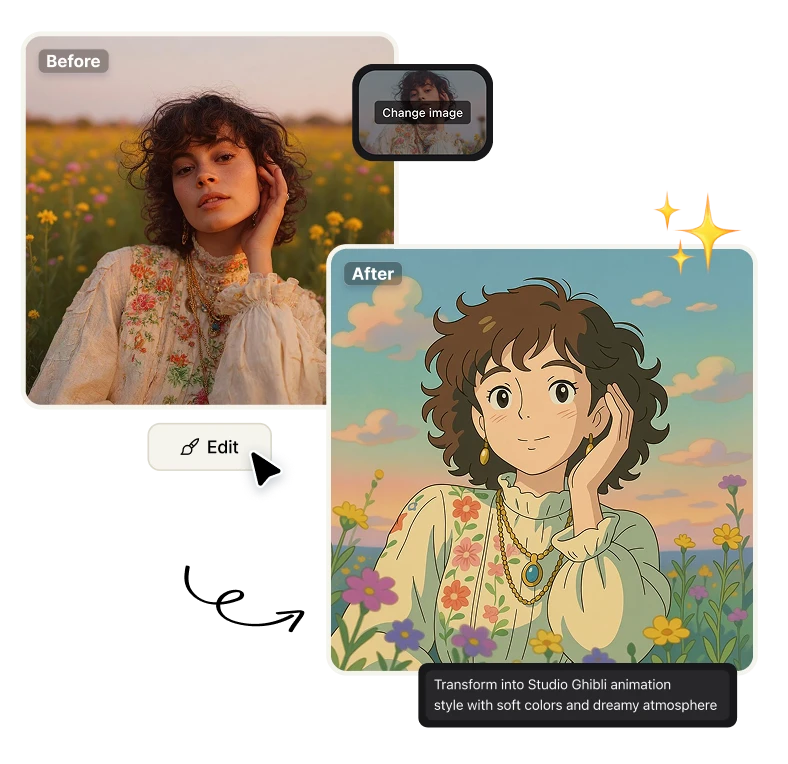AI Photo to Studio Ghibli — Create Anime-Style Images Instantly
Consistency & Scalability — One Style, Endless Applications
Ensure visual cohesion across all brand touchpoints—from Instagram carousels to website headers and email campaigns—by applying the same Ghibli aesthetic everywhere. You get a scalable style toolkit: drop in new images, maintain your brand's enchanted look, and stay on theme without hiring multiple artists or juggling inconsistent visuals.
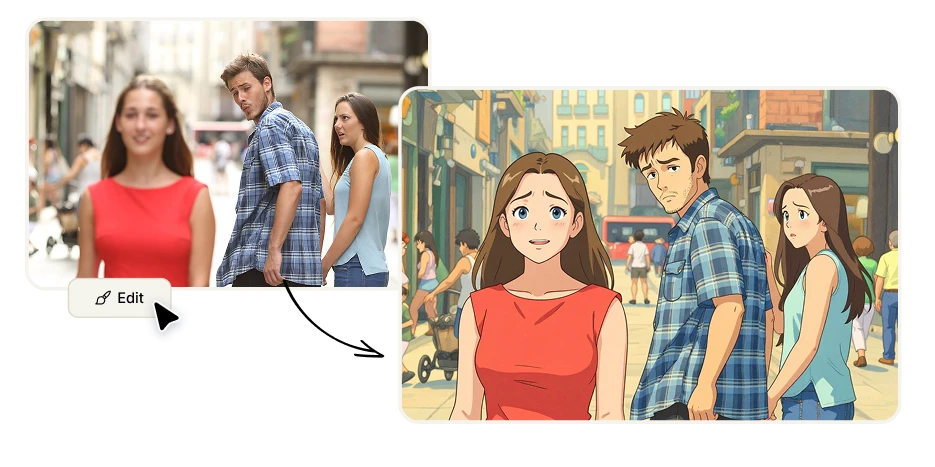
Outshine Competitors
Stand out in a sea of stock visuals and dated design tools. This AI-powered Ghibli-style generator gives you a modern, high-end aesthetic without the expensive illustration fees or steep learning curves. Swap Photoshop or sourcing illustration briefs for one-click magic—leaving competitors with dull templates in the dust
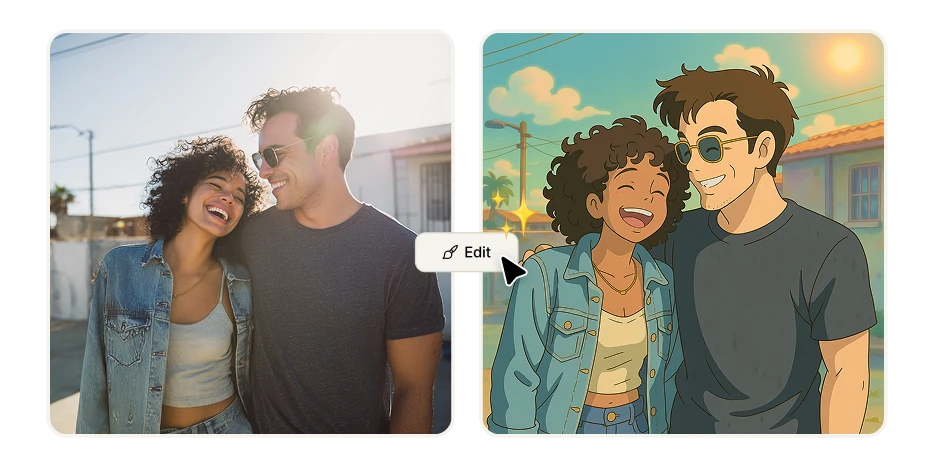
Fast and Effortless Storytelling
Turn ordinary client visuals into emotionally resonant Ghibli-style illustrations in seconds. Capture that nostalgic, cinematic feel—complete with soft textures, pastel tones, and dreamy atmospheres—without spending days on custom illustration. Ideal for social posts, campaign visuals, or landing page hero banners that engage and inspire instantly. Here you can see an example of the amazing Hayao Miyazaki, the creator of Studio Ghibli and its unique narrative and visual style.
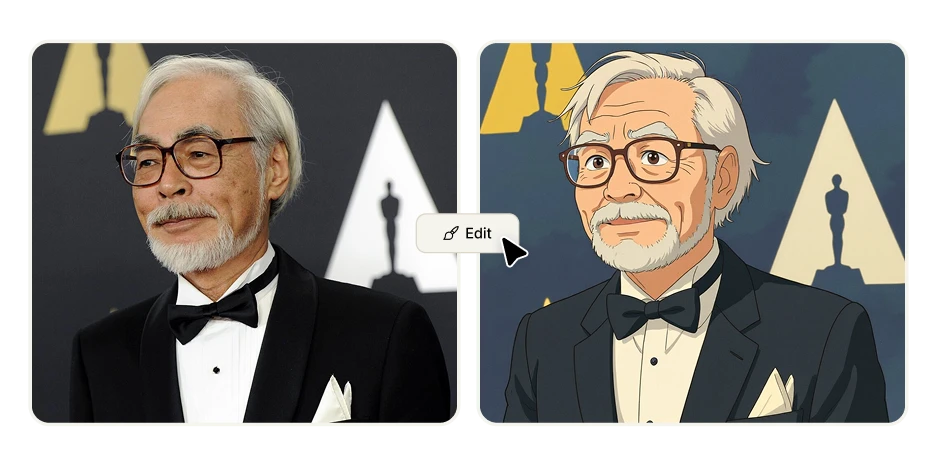
Use AI to transform a photo into a Hayao Miyazaki's creation
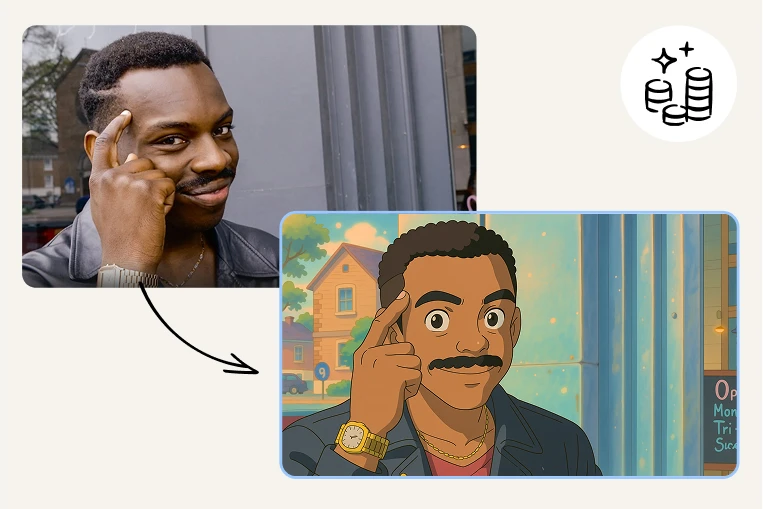
Ultra-Affordable Creativity on Demand
Why spend thousands on illustrators or agencies when, for just a tiny fraction of the cost, you can generate Ghibli-style images yourself — and then remix, tweak, or scale them as much as you want? Whether you're creating one hero banner or dozens of campaign variations, our tool delivers endless, budget-friendly creativity. Perfect for marketing agencies and design teams who demand high visual impact without the high price tag.

Lightning-Fast Output
Time is money — and with our Studio Ghibli Artificial Intelligence, you get enchanting images in seconds, not days. Ditch the back-and-forth, endless feedback loops, or slow design sprints. Even better: developers can tap directly into our API to integrate seamless Ghibli-style image generation into campaigns, apps, or marketing platforms. It's fast, flexible, and future-ready—perfect for agencies and creators looking to automate magic.
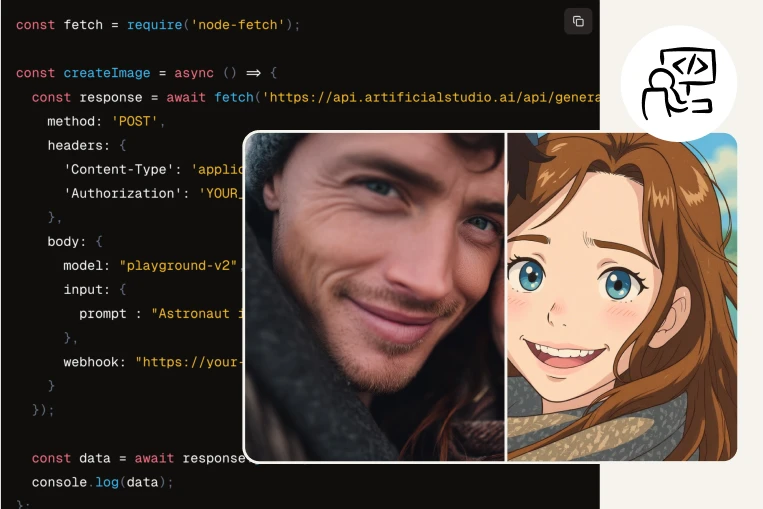
Developer-Friendly API for Seamless Integration
Bring the magic of Studio Ghibli–style AI art directly into your own products, apps, or services with our powerful API. Whether you’re building a creative SaaS, enhancing a marketing platform, or automating campaign visuals, our API makes it easy to generate and scale Ghibli-style images on demand. Fast, reliable, and built for growth—it’s creativity as a service.
Learn how to convert photos into Studio Ghibli style
Choose the Qwen model and your photo
When you open the image editor, select the Qwen AI model. Not only is it one of the most affordable and the newest, but it’s also the best for this kind of work. Pick the photo you like most, just make sure it’s clear and easy to see.

Write your prompt and edit
Type something like “Transform into Studio Ghibli animation style with soft colors and dreamy atmosphere”, then click the Edit button. Wait a few moments while your photo is transformed into an anime-style illustration.
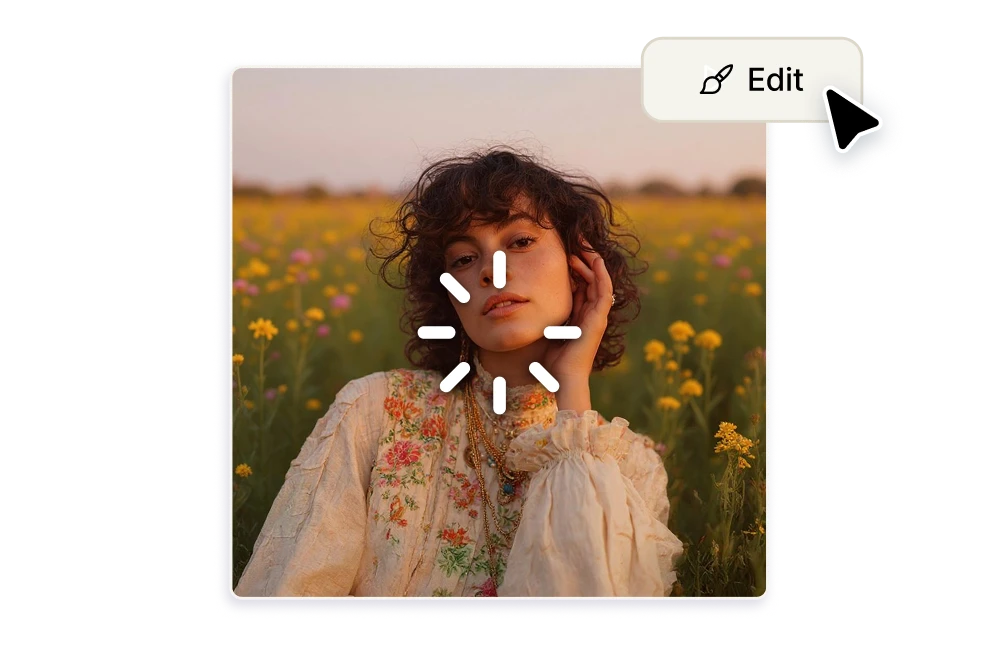
Convert the photo and download it
Artificial Studio will display your photo converted into Studio Ghibli style. You can download it right away and use it anywhere you like! Try different prompts, adjust as you wish, or even experiment with other models. The possibilities are endless.
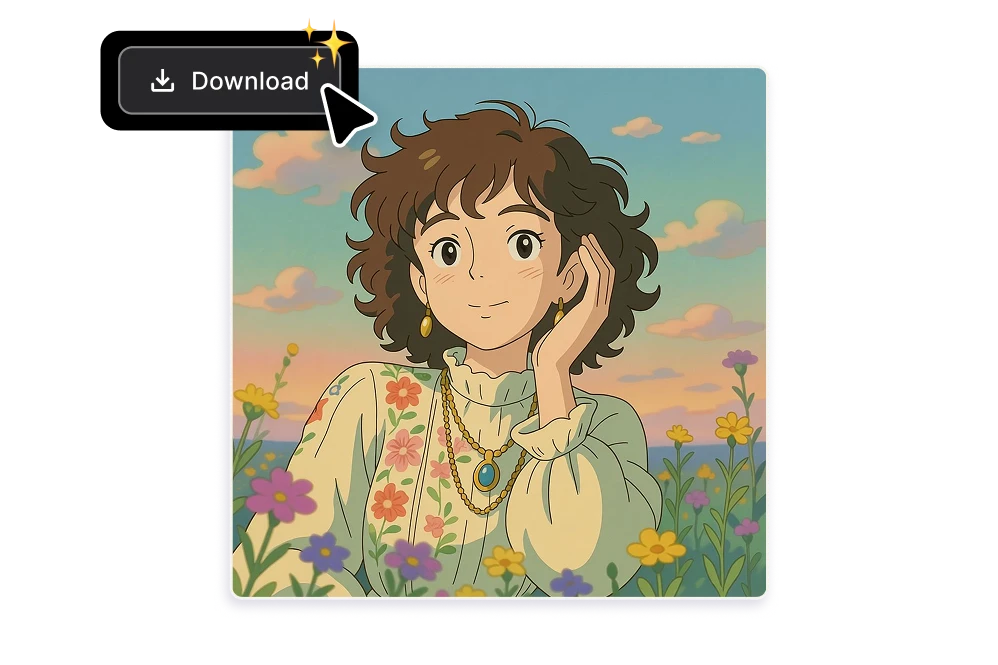
FAQs
Our Studio Ghibli AI tool transforms any photo—whether it’s a portrait, a pet, or a landscape—into a dreamy, hand-drawn illustration inspired by the art style of Hayao Miyazaki’s films. Unlike apps such as Fotor or Insmind, Artificial Studio is designed for both individual creators and professional agencies who need fast, consistent, and high-quality anime-style visuals.
This tool is perfect for marketing agencies, design studios, content creators, and developers who want to produce engaging visuals without hiring expensive illustrators. If you’re running ad campaigns, building websites, or managing social media, Ghibli-style images can boost emotional connection and brand recall. Unlike aiease.ai or remaker.ai, we also provide an API, making it easy for developers to integrate Ghibli-style image generation directly into their own products or services.
Hiring a professional illustrator or a design agency to create anime-style art can cost hundreds or even thousands of dollars per project—and often takes weeks to deliver. With Artificial Studio, you can create unlimited Ghibli-style variations at just a few cents per image, making it far more affordable and scalable for ongoing campaigns.
Speed is one of our biggest advantages. While traditional design workflows take days, our AI delivers ready-to-use Ghibli-style illustrations in seconds. This means you can move faster than your competitors and keep up with the demands of modern content marketing.
Yes. Artificial Studio offers a developer-friendly API that lets you integrate Studio Ghibli AI art generation into your own apps, SaaS platforms, or internal workflows. This is a key differentiator compared to tools like Fotor or Easemate.ai, which mainly focus on individual use cases. With our API, agencies and developers can automate image creation at scale.
Not at all. While anime and Ghibli lovers will definitely enjoy it, the real value is for brands and agencies that want visuals with high emotional impact. Ghibli-style art connects with audiences on a nostalgic, human level—making it perfect for ads, product visuals, packaging, or even editorial content.
Unlike Fotor, Insmind, Aiease.ai, Easemate.ai, or Remaker.ai, Artificial Studio focuses on three key advantages:
Affordability – Create unlimited visuals for a fraction of the cost of illustrators.
Speed – Generate anime-style images in seconds, not days.
API Integration – Scale your workflow by embedding our AI directly into your own tools.
No experience required. Simply upload your photo, choose the Ghibli style, and let our AI do the rest. It’s intuitive enough for beginners, but powerful enough for agencies that need to produce hundreds of variations.
The “Studio Ghibli style” is a unique blend of traditional hand-drawn animation, rich watercolor and gouache textures, and warm, dreamy color palettes—all combined with expressive, emotionally nuanced storytelling. These films are hand-painted, relying on soft lines, ambient lighting, and whimsical yet grounded environments to evoke nostalgia, innocence, and wonder. It’s more than just “anime”—it’s a cozy European-influenced aesthetic with handcrafted charm that transports the viewer into an emotionally rich world.
Whether you're working manually or with AI, here’s how you capture that signature Ghibli magic:
Study the aesthetic: Watch films like Spirited Away, My Neighbor Totoro, and Princess Mononoke. Observe how they layer foreground, midground, and background for depth with soft gradients and natural lighting
Character design: Use gentle, flowing linework. Characters often have round faces, large expressive eyes, and simple but emotive expressions—nothing overly exaggerated
Color and lighting: Stick to warm pastels and muted palettes—think soft greens, pinks, blues, and golden-hour glow. Use ambient and rim lighting to evoke atmosphere
Textures and details: Incorporate painterly, watercolor or gouache-like textures. Add delicate natural details—fluttering leaves, rustic architecture, tiny whimsical touches—to spark curiosity
Depth and motion: Use atmospheric perspective—fade distant elements into soft blues—and imply movement even in still scenes (like swaying grass or drifting clouds).
Workflow tools:
Manual/digital tools: Procreate, Clip Studio Paint, Photoshop with soft brushes and texture overlays
AI-assisted: Use prompt terms like “Studio Ghibli style”, “watercolor Ghibli aesthetic”, or “Miyazaki art style”—and combine with atmospheric keywords like “soft pastel lighting”, “lush forest background”, or “whimsical magical realism” for better results
Post-processing: Soft blur on backgrounds, texture overlays, and manual color tweaks help counteract over-sharp AI output and reinforce the hand-painted feel
